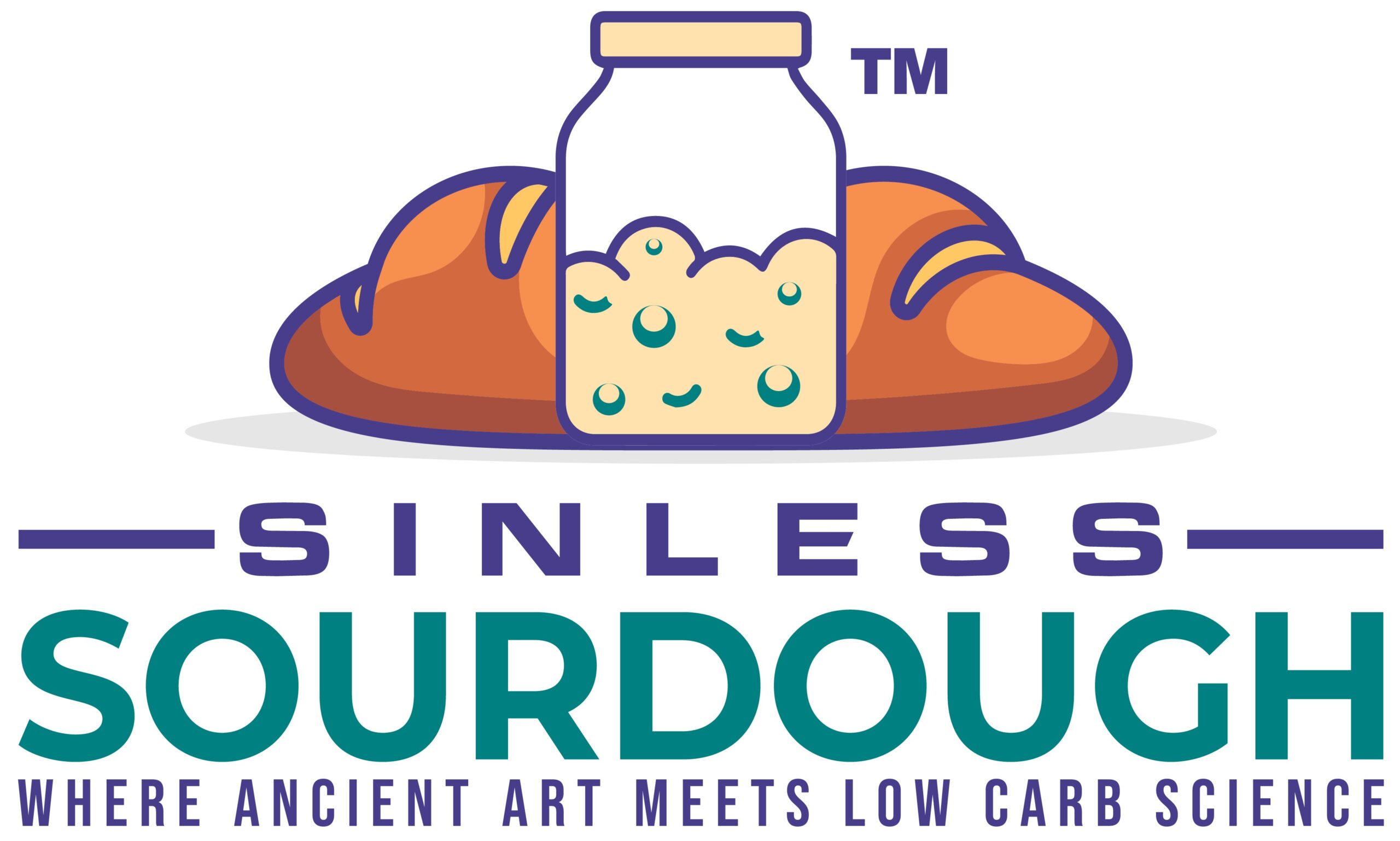Vital Wheat Gluten

Anthony’s Vital Wheat Gluten (& Oat Fiber) Amazon Links:
Why Vital Wheat Gluten Makes Sinless Sourdough Possible
Historical Significance
Vital wheat gluten doesn’t have a specific historical narrative. It’s a modern ingredient derived from wheat flour, becoming popular in commercial baking and as a protein supplement.
Nutritional Profile
Vital wheat gluten offers a unique nutritional profile:
- Extremely high in protein (approximately 75-80% protein by weight)
- Low in carbohydrates
- Contains all essential amino acids
- Good source of iron and other minerals
Counting Carbs
Low Carbohydrate Content
Vital Wheat Gluten is a unique ingredient with remarkably low carbohydrate content, typically containing about 4g of total carbohydrates per 1/4 cup (30g) serving.
Production Process
This low carb profile is due to its production process, which involves washing wheat flour to remove starch and isolate the protein (gluten), resulting in a product that’s 70-80% protein. The removal of starch, the primary source of carbohydrates in wheat products, naturally leads to a lower carb count.
Perfect Partner for Oat Fiber
Vital Wheat Gluten is often used in combination with oat fiber in low-carb baking, as oat fiber is virtually carb-free and adds bulk without increasing net carbs. This combination not only reduces overall net carbs in recipes but also enhances texture, making low-carb baked goods more similar to traditional wheat-based products.
Benefits for Low-Carb Diets
The low carb content and high protein profile of Vital Wheat Gluten, especially when used with oat fiber, make it a popular choice for low carb and even keto-friendly recipes. It has a low glycemic impact, contributes to satiety, and allows for the creation of low-carb versions of traditionally high-carb foods. This versatility and its ability to maintain desirable textures and flavors while fitting within low-carb or ketogenic dietary frameworks have made Vital Wheat Gluten a valuable ingredient in health-conscious baking and cooking.
Digestibility
Sourdough fermentation, both in the starter and preferment, makes bread easier to digest by breaking down gluten in several ways. The process involves friendly bacteria and wild yeasts that produce enzymes and acids. These enzymes chop up the gluten proteins into smaller pieces, while the acids create an environment that further helps break down gluten. The long fermentation time typical in sourdough baking allows this process to work more thoroughly. As a result, the gluten structure is altered, making it less troublesome for many people’s digestive systems.
Important: However, it’s important to remember that while this process makes the bread more digestible, it doesn’t eliminate gluten entirely, so it’s still not safe for people with celiac disease.
Baking Properties
Vital wheat gluten has unique baking characteristics:
- Significantly improves dough elasticity and structure in low-carb bread
- Enhances rise and texture in baked goods, especially in low-gluten flour recipes
- Helps create a chewy texture in bread
- Often used to boost protein content in baked products
Contributions to Low Carb Sourdough
- Structure: Improves dough strength and elasticity
- Texture: Enhances chewiness and crumb structure in the final bread
- Rise: Aids in better oven spring and overall volume
- Protein Content: Significantly increases the protein content of the bread
Use in Low Carb Sourdough
- Excellent for improving structure and texture in low-carb breads
- Helps create a more traditional bread-like consistency
- Increases protein content without adding significant carbohydrates
- Can be used to enhance the rising properties of low-carb flours
Vital wheat gluten is particularly valuable in low-carb baking, including sourdough applications, where it can significantly improve the texture, structure, and protein content of bread while keeping carbohydrates low. However, it’s important to use it in moderation as it can make bread too chewy if overused, and it’s not suitable for gluten-free diets.
